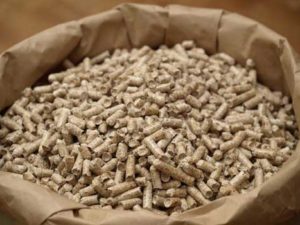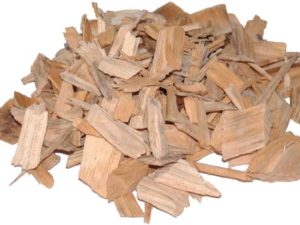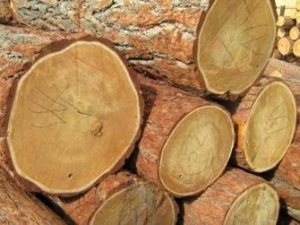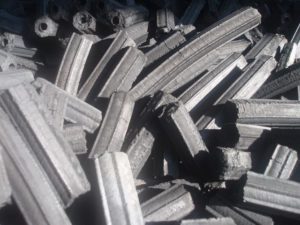Description
Wood type Material: 100% Pine Wood, Spruce Wood, Beech Wood, Fir Wood, and Birchwood Quality standard: Wood pellets A1 Color: Light yellow, yellow Diameter: 6mm and 8mm Length: 3-40 mm Moisture: ≤6% Ash: <0.5% Heating capacity: 5.1 kWh / kg (4400 kcal/kg or 18.5 MJ / kg) Volatiles: 80-85% Sulfur content: ≤0.03% Bulk density: 650 kg / m³ 100% natural environmentally friendly raw materials: pine or hardwood, pure wood Quality guaranteed
A wood pellet is a piece of groundwood, dehydrated and compressed to twice the energy density of green wood. In addition to the increased density, a pellet has a higher calorific value, less expensive transportation costs, improved storage and logistics, and automated handling. In essence, wood pellet fuel becomes a viable substitute for fossil fuels such as oil or natural gas.
Wood Pellets Benefits: – Pellets are a renewable and sustainable heat and energy fuel, produced from 100 percent wood fiber.
– Pellets are carbon neutral. When burned, they emit the same amount of carbon dioxide as is absorbed when a tree grows in the forest.
– It cost less than fossil fuels. The cost of wood pellets is far more stable than the ever-increasing price of fossil fuels.
– Pellets are available locally.
How do pellets compare? For heating, one ton of wood pellets equals… – 120 gallons of heating oil – 170 gallons of propane – 16,000 ft3 of natural gas – 4,775 kWh of electricity
Application of Wood Pellets and Use of Biomass Pellets:
The application of Wood Pellets is extensive worldwide and the use of biomass pellets can be seen in daily life. Wood pellets are actually made from agricultural or forestry wastes such as straw, sawdust, bagasse, peanut shell, sunflower seed shell, saw shavings, grain stalks and straw. Pellet fuel shall be processed via the process of crushing, drying, mixing, pelleting, cooling, screening and packaging. Biomass pellets are used widely as a new green energy fuel, which is mainly used as a substitute for fossil fuel (coal, gasoline and natural gas) and mainly applied to the following industries:
1. Wood Pellets for Industrial Use Biomass material without the process of being pelletized only possesses low thermal value yet high greenhouse gas emissions such as carbon dioxide and sulfur dioxide which are the killer of ozone. Speaking of industrial use of Biomass material, the scale of use goes quite extensive and the air pollution issue will become more intense. However, the application of wood pellets will solve the problems. Besides, the large-scale use of biomass pellets will enhance the thermal value of biomass waste material during heating and the pollutant emissions will decrease significantly. Therefore, The transformation of energy structure from fossil fuel into biomass pellets use has been developing in full swing. As we can see worldwide that more and more industrial power plants are being converted into CHP models in which biomass pellets will play a big role.
2. Wood Pellets Are Also Popular With Small Furnace For Domestic Heating System And Hot Water Supply. Application of wood pellets can be commonly seen across the whole of Europe and North America, especially in Northern Europe. Biomass pellets have long been put into use impressively. The two regions have become the forerunners of biomass pellet energy use and more and more small-scale use of pellets are booming since the large-scale pellet power plants have long accounted for a lion’s share in the biomass pellet market. A small furnace with biomass pellet fuel is the best option for domestic heating systems and hot water supply. Even the catering industry and domestic BBQ would like to take wood pellets as fuel replacement in a renewable manner.
It is reported that the rapid growth in international pellet trade is expected to continue, which would satisfy GHG emissions policies. The major developments of wood pellets which is made by pellet plants have been in North America and Europe. Still, there would be more new producing and consuming regions that enter the market, so the current trade quantities and routes of wood pellets would be expanded. The United States appears poised to increase exports further with the continued construction of new pellet plants in the Southeast and by turning to wood sources beyond wood waste. However, energy policies especially in the EU, and wood pellet production growth in countries with vast forest lands and established forest industries could compete with U.S. wood pellet export potential.
It is have been specially produced for heating. It is biosecure and burns well in pellet stoves.
• Quality standards of 6 mm or 8 mm Din+ premium pellet • Pellets have a length of 5-20 mm, the diameter of 6 mm • Sulphur contained less than 0,05% • Energy content approx. 4,8 kWh/per kg • Ash content less than 0,5% • Bulk density more than 650 kg/m³.
As issues of renewable energy and new fuel technologies rise to the forefront of today’s society, many firewood suppliers have looked toward new and exciting strategies for heating homes and creating power for the average consumer. One such method is the use of biomass wood pellets.
Wood pellets are what is generally called biomass fuel; what this means is that they are developed from organic materials, making them a renewable and sustainable source of energy. Produced from sawdust and other wood waste products, wood pellets are created as a byproduct of the waste created in industries like sawmilling. Their small size, measured in millimeters in length and width, allows wood pellets to be densely packed into a given storage area with minimal wasted space. Their low ash content and low moisture lead to high combustion efficiency, meaning they’ll burn with much less prompting than similar firewood sources.
Wood pellets are used for various purposes, and are highly efficient as a fuel source due to their small size and high density; they create very little CO2 when burnt, making them extremely environmentally friendly compared to fuel sources such as oil or coal. These wood pellets can heat homes and provide power for buildings ranging from industrial plants to everyday residential locations.
Although wood pellets were once simply burnt like firewood would be, their rising popularity as a fuel source has led to the advent of high-efficiency boilers that maximize the amount of heat produced and allow home-owners to regulate the speed at which they are burned and the amount of heat produced – oftentimes, these adjustments can be made with a simple home thermostat.
These pellets have seen a great increase in use in the United Kingdom following the development of the Non-Domestic Renewable Heat Incentive, which offers regular payments to those who use them in their businesses and homes. They have been widely used in other European countries for years, including Germany and Sweden, but the advantages put in place by the Renewable Heat Incentive make them a rising source of both electricity and heat in the United Kingdom.






